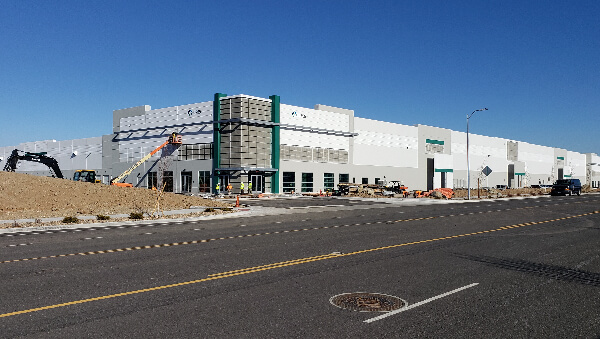Discover the best ways to sell and ship with Amazon.
Many manufacturers and retailers choose Amazon FBA (Fulfillment by Amazon) for fulfilling their Amazon shipping needs. These companies are outsourcing end-to-end ecommerce order fulfillment to Amazon’s order fulfillment centers. When a customer orders their product from Amazon, it’s pulled from inventory stored in an Amazon fulfillment center, packed and shipped. For a small company with a limited number of SKU’s and orders to fulfill each month, this simple “Fulfilled By Amazon” solution can make a lot of sense. But as a company grows, the product array widens and the consumer base becomes national, storing inventory with Amazon may no longer be the best model.
There are clear benefits to a strategy for shipping through Amazon. First, when you let Amazon ship your products for you, you don’t have to tie up your own employees with handling fulfillment activities. Instead, they can focus on other aspects of your business such as new product development. Second, you keep access to Amazon’s lucrative customer base, without having to worry about meeting Amazon’s strict shipping requirements—such as committing to free, two-day delivery with 98.5% of orders shipping on time.
However, choosing Amazon FBA can have significant disadvantages as well. And in today’s e-commerce order fulfillment world, they can have a significant impact on your bottom line.
The disadvantages of Amazon FBA
Here are some shortcomings and considerations for Amazon FBA:
- Less visibility over your inventory: You’ll need to allocate inventory specifically for Amazon FBA, plus have products available for other sales channels as well. Your inventory is often scattered over multiple locations with no clear communication among them, generally lacking a central solution for meeting all online sales demand. You won’t have a clear picture of what’s on the shelf and ready to ship.
- Less inventory control: Lack of visibility leads to lack of control. If you don’t know where all your inventory is, how can you be sure if it’s in the right place at the right time to meet customer demand? What if sales are slow on Amazon and surge in one or more of your other sales channels? You could have inventory collecting dust at an Amazon fulfillment center, while your shelves are emptying elsewhere.
- Less control over your brand experience: You work hard to meet customer expectations—and are always there to answer questions and ensure satisfaction. What happens if a customer who bought on Amazon has an issue with how Amazon shipped their order? How can you step in to help if you don’t know there’s an issue in the first place? This scenario can quickly erode brand loyalty—and you may not even know it’s happening.
Then, there’s the unboxing experience. Your customers may expect to see “extras” such as custom packaging, a thank-you note, product samples, promotional offers and more. Amazon FBA can’t offer that level of customization—just a brown box that looks like everything else on the delivery truck.
- Higher overall costs: With more complexity comes more cost. First, you must pay for shipping to multiple fulfillment centers: Amazon plus your other 3PL fulfillment center(s). Next, you’re paying Amazon FBA charges on both storage (whether products sell or not) and fulfillment (on every product that sells). Then, Amazon can charge you to move your inventory among its fulfillment centers. Lastly, Amazon will hold in escrow money collected from selling your products—cash flow that they can leverage, but not you.
Overall, when you let Amazon control your fulfillment, it translates into less control of your inventory, brand experience and financial health. The key is to establish more inventory control.
Getting more control of your inventory
Before the pandemic, e-commerce sales were already growing. During the pandemic, that growth has literally exploded—and levels that were once considered “the holiday rush” are now considered normal. For that matter, as we anticipate the 2021 holiday season, how will you ensure you have more control of your inventory to meet the next big surge?
If there was ever a better time to take back control over inventory management, it’s today. By using Amazon FBA, you relinquish some of that control. Yet, you don’t want to lose access to the lucrative Amazon customer base. What can you do to have the best of both worlds: both control and a larger sales audience via Amazon and Amazon Prime?
The answers lie in working with TAGG Logistics as your 3PL Fulfillment Partner. We can help you meet Amazon shipping requirements, reach consumers faster with our nationwide fulfillment center network, and balance inventory across all ecommerce fulfillment channels you use for sales. What’s more, TAGG Voyager, our ecommerce fulfillment technology platform, gives you the visibility and control you need for all aspects of Amazon shipping and omnichannel fulfillment.
TAGG Voyager: take greater control of your Amazon shipping
For CPG manufacturers and online retailers with multiple channels that want more control over inventory—while still selling to Amazon customers—the answer is Amazon Seller Fulfilled Prime. With this option, you or your outsourced 3PL fulfillment partner manages fulfillment, based on Amazon’s requirements. And TAGG Voyager gives you complete visibility and more control over every Amazon order, every day. Amazon Seller Fulfilled Prime becomes your strategic advantage when you work with TAGG Logistics as your 3PL fulfillment partner:
- It allows you to take advantage of a relationship with a 3PL fulfillment partner. For example, TAGG Voyager, our proprietary business intelligence software, gives you complete visibility into your Amazon inventory 24/7/365—so you don’t have to log in to an Amazon portal or wait on the phone for an Amazon Customer Service Representative.
- Greater inventory visibility will give you more control, so you can adjust inventory that needs to be shipped to Amazon as well as other channels as needed. For example, let’s say you log in to TAGG Voyager one morning and notice that you had a lot of orders for a particular product overnight, due to a sales promotion. Suddenly, you’re running out of inventory on Amazon. Now you have the power to decide what to do next: either choose to be out of stock on Amazon (and accept the fine) or avoid it by moving inventory from elsewhere to Amazon and putting that product on backorder in other sales channels. With TAGG Voyager, you’re in control.
- Better manage your customer’s entire brand experience from the convenience of a single, integrated dashboard with TAGG Voyager, including the ability to:
- Get granular detail on every order and view shipment status on a real-time map
- Easily change orders with a single click—including shipping options, product selection and cancellations
- Do advanced reporting to see which products are selling better than others, peak fulfillment times, expenses and much more
Having greater control over your Amazon shipping is one more way to take Your Business EverywhereSM today. TAGG is here to be your 3PL fulfillment partner.
Contact Us Today



